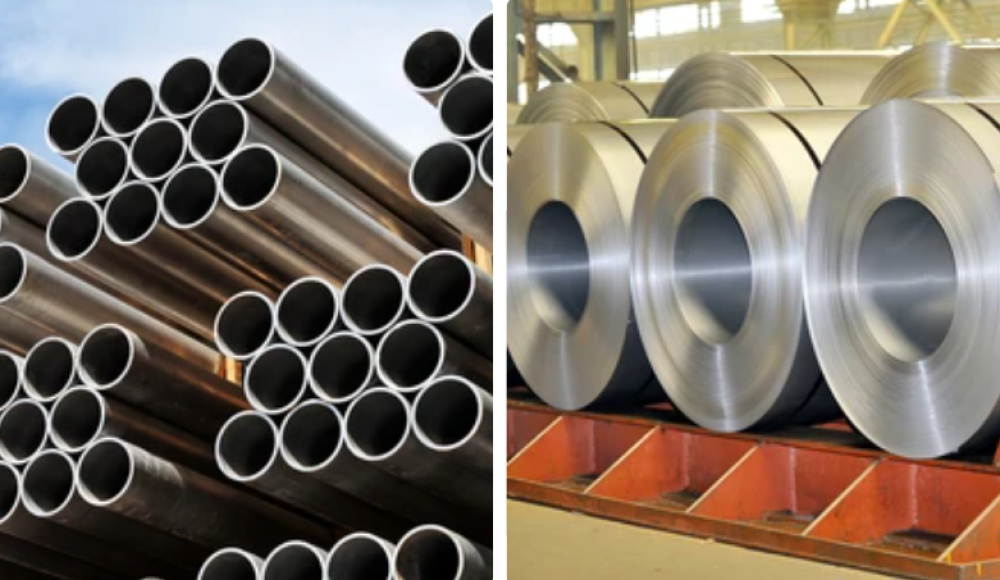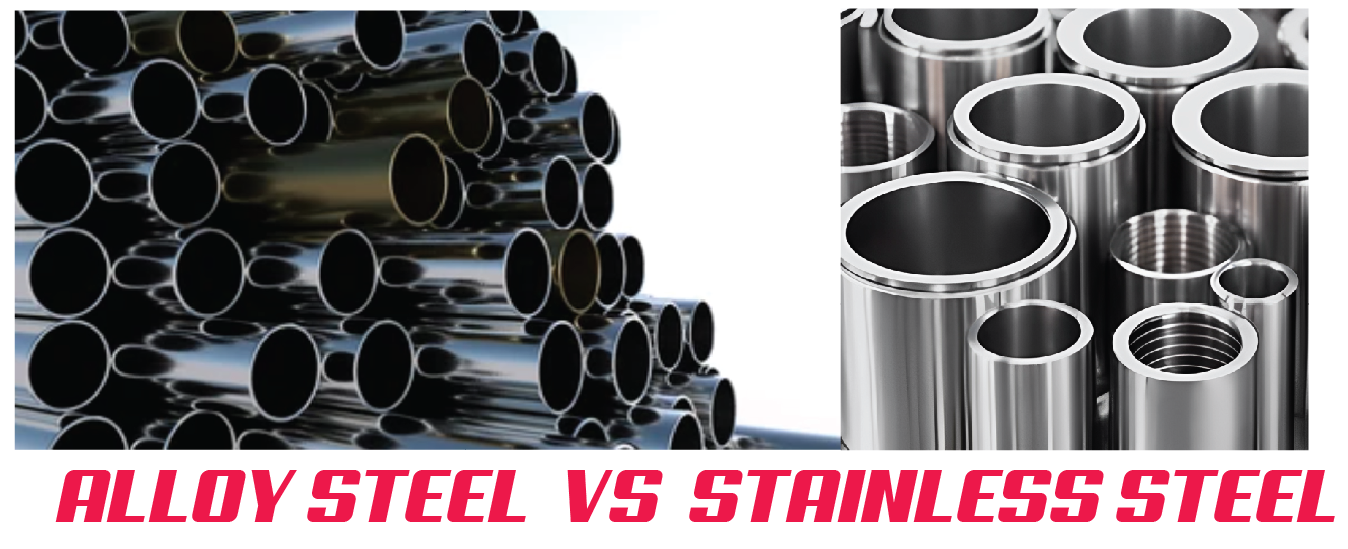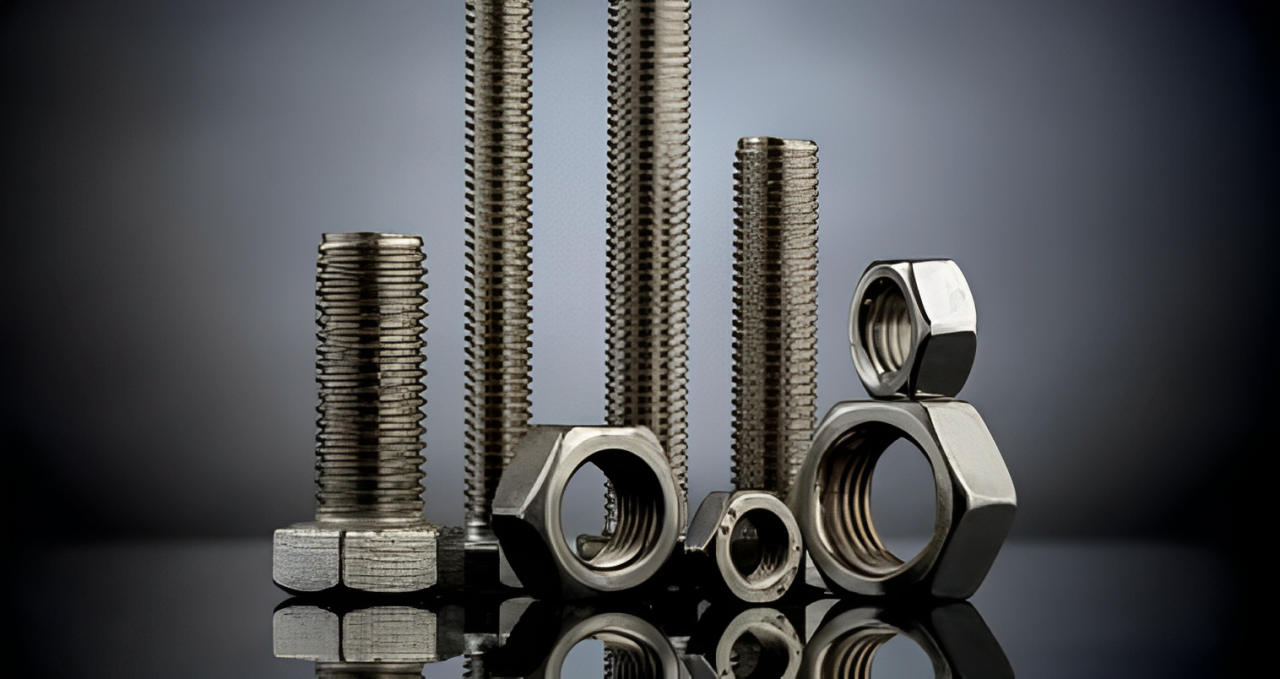Como es ampliamente conocido acero desempeña un papel en muchas ramas industriales, para la construcción, diferente fabricación, y la industria automotriz. Los diversos tipos de grados de acero disponibles en la actualidad incluyen acero aleado y acero inoxidable, entre otros productos, ya que estos productos están catalogados para usos debido a sus características flexibles y altos niveles de durabilidad.. Pero cada tipo de acero tiene características únicas que lo califican para ciertas aplicaciones.. En este articulo, Descubrirás qué son los materiales de acero aleado y acero inoxidable., las diferencias de sus tipos, y consejos útiles para decidir cuándo utilizar cada material para la producción de piezas.
¿Qué es el acero aleado??
El acero aleado se refiere al acero con uno o más elementos de aleación., es decir. manganeso, cromo, níquel, molibdeno, vanadio, y silicio. Las cantidades de estos elementos son generalmente diferentes y suelen comprender entre el uno y el cincuenta por ciento. Como resultado directo, mejora las características de resistencia, trabajabilidad, dureza, corrosión, y usar. El acero aleado se aplica en industrias que exigen resistencia y altos rendimientos, que incluyen; aviación, automóviles, y sectores mecánicos.
¿Qué es el acero inoxidable??
El acero inoxidable es un material utilizado en la construcción porque es una aleación de acero que contiene nada menos que 10, o 5% cromo. Entonces, Garantiza una excelente protección contra la corrosión gracias a la capa de óxido de cromo Cr2O3.. También tiene otros ingredientes como el níquel., y molibdeno que también aumentan su capacidad de no contraer óxido., tinción, y corrosión. Entonces, Las cualidades más importantes que los clientes valoran son su apariencia., propiedades sanitarias, y dureza, Por eso el acero inoxidable se demanda en numerosos sectores.. Estos pueden incluir la industria alimentaria., producción de instrumentos médicos, construcción, etc..
Tipos de acero aleado
Entonces, Aquí están las diferentes formas de acero aleado y sus composiciones., propiedades, y usos en industrias.
| Tipo de acero aleado | Explicación | Propiedades clave | Aplicaciones Típicas |
| Acero de baja aleación | Contiene < 5% elementos de aleación | Propiedades mecánicas mejoradas | Aplicaciones estructurales, puentes, edificios |
| Acero de alta aleación | Contiene > 5% elementos de aleación | Dureza superior y resistencia al desgaste. | Aplicaciones de alto rendimiento, herramientas industriales |
| Acero cromoly | Aleación de cromo-molibdeno | Alta resistencia, resistencia al calor | Piezas aeroespaciales, componentes automotrices |
| Acero de aleación de níquel | Contiene níquel para mayor dureza. | Excelente tenacidad a bajas temperaturas. | Aplicaciones criogénicas, recipientes a presión |
| Acero al manganeso | Conocido por su resistencia de alto impacto | Resistencia a la abrasión | Piezas de desgaste (p.ej., trituradoras de roca, vías de ferrocarril) |
Tipos de acero inoxidable
Entonces, Analicemos los diferentes tipos de acero inoxidable en la siguiente tabla..
| Tipo de acero inoxidable | Explicación | Propiedades clave | Aplicaciones Típicas |
| Acero inoxidable austenítico | El tipo más común; es no magnético | Excelente resistencia a la corrosión, formabilidad | Equipo de cocina, dispositivos médicos |
| Acero inoxidable ferrítico | Contiene cromo y un poco de níquel. | Resistencia moderada a la corrosión, buena formabilidad | Piezas de automóviles, accesorios |
| Acero inoxidable martensítico | Contiene mayor carbono; conocido por su dureza | Alta resistencia y dureza | Instrumentos quirúrgicos, herramientas de corte |
| Acero inoxidable dúplex | Combina propiedades austeníticas y ferríticas. | Alta resistencia, excelente resistencia a la corrosión | Industria del petróleo y el gas, procesamiento químico |
| Acero inoxidable endurecido por precipitación | Reforzado por tratamiento térmico. | Fuerza excepcional | Componentes aeroespaciales, herramientas de alto rendimiento |
Comparación entre acero aleado y. Acero inoxidable
De vez en cuando nos encontramos con los términos acero aleado y acero inoxidable.. Analicemos las principales diferencias entre ellos..
1. Resistencia a la corrosión
El acero inoxidable es muy inmune a la corrosión por el contenido de cromo.. Tiende a formar una capa de óxido que lo hace adecuado para la humedad o cualquier otro ambiente corrosivo.. Sin embargo, Para que el acero aleado ofrezca el mismo nivel de resistencia debe someterse a un tratamiento que no sea inherentemente muy resistente..
2. Fortaleza
Dependiendo del tipo de elementos de aleación utilizados., Podemos mejorar la resistencia a la tracción en acero aleado para mejorar el alto rendimiento.. Además, El acero inoxidable tiene una mayor resistencia que el acero al carbono y no es más resistente que el acero aleado..
3. Costo
El acero inoxidable es un poco más caro que el acero aleado debido al uso de cromo y níquel y al nivel de dificultad a la hora de procesarlo.. Por ejemplo, Los artículos de acero aleado podrían ser más baratos en la mayoría de los casos, ya que pueden emplear agentes de aleación más baratos..
4. Estético
El caucho tiene una excelente resistencia a la abrasión, es químicamente resistente y se usa principalmente en medias.. El acero inoxidable tiene un brillo, aspecto pulido y se utiliza donde la apariencia puede ser importante, es decir. polo. Sin embargo, El acero aleado no es visualmente atractivo pero es más funcional..
5. Propiedades magnéticas
La mayoría de los aceros inoxidables no sienten atracción magnética y son adecuados para usos donde el magnetismo es significativo.. Como la mayoría de los aceros, Muchas láminas de aleación tienen lo que se conoce como "respuesta magnética"., que a veces es deseable en usos industriales.
6. Durabilidad
El acero aleado está desarrollado para soportar altas tensiones, lo que lo hace siempre fuerte y duradero bajo presión.. La mayoría de los aceros inoxidables ofrecen buena resistencia contra la corrosión, pero sus propiedades mecánicas pueden no tener las de los aceros aleados de alta resistencia bajo cargas elevadas..
7. Resistencia al calor
En casos posteriores donde el estrés térmico es un problema, El acero inoxidable generalmente funciona mejor ya que no pierde forma bajo altas temperaturas.. Pero dependiendo de su formulación, utilizamos acero de aleación, especialmente desarrollado para resistencia a altas temperaturas.
8. Trabajabilidad
Es más fácil trabajar con acero aleado, especialmente cuando se diseñan estructuras complejas que pueden requerir un trabajo sofisticado.. Acero inoxidable, incluso más fuerte, También es más pesado y más difícil de trabajar debido a su dureza.. encima de eso, Tiene problemas con el endurecimiento por trabajo electromagnético..
| Característica | Aleación de acero | Acero inoxidable |
| Resistencia a la corrosión | Requiere tratamientos especiales; menos resistente | Altamente resistente debido al contenido de cromo. |
| Fortaleza | Alta resistencia a la tracción (arriba a 250,000 psi) | Fuerza moderada (arriba a 200,000 psi) |
| Costo | Generalmente más asequible ($0.50 – $2.00/libra) | mas caro ($1.50 – $4.00/libra) |
| Estético | Más funcional; acabado generalmente mate | Valorado por brillante, aspecto pulido |
| Propiedades magnéticas | Conserva propiedades magnéticas. | La mayoría de los grados no son magnéticos. |
| Durabilidad | Excelente bajo estrés extremo | Durable contra la corrosión |
| Resistencia al calor | Varía según la composición.; hasta 1,200°F | Mantiene la integridad hasta 1,500°F |
| Trabajabilidad | Más fácil de mecanizar y fabricar | Más difícil de soldar y dar forma |
Consejos a considerar al elegir el acero ideal para su proyecto de mecanizado
Los siguientes son factores importantes que debe considerar al elegir el acero ideal para su proyecto..
- Resistencia a la corrosión: Elija acero inoxidable para áreas expuestas al agua o productos químicos..
- Resistencia y durabilidad: Elija acero aleado si es necesario que tenga una alta resistencia a la tracción y un cierto nivel de tenacidad..
- Costo: Los costos del acero aleado son más bajos que los del acero inoxidable..
- Requisitos estéticos: El acero inoxidable debe utilizarse en proyectos donde el producto final requiera algún elemento pulido y estéticamente agradable..
- maquinabilidad: Puede ser más difícil trabajar con ciertos tipos de ambos materiales, por lo que la selección depende de lo que sea deseable para un proyecto determinado..
Aplicaciones del acero aleado
Entonces, Estas son algunas de las aplicaciones comunes del acero aleado.:
- Componentes automotrices: Popular para ejes y ejes de engranajes ya que es un material resistente y resistente..
- Piezas aeroespaciales: Adecuado para trenes de aterrizaje de aviones y palas de turbinas debido a sus propiedades de alta temperatura..
- Construcción: Empleado en piezas estructurales de alta resistencia como puentes y edificios..
- Estampación: Popular en brocas, sierras, y máquinas herramienta debido a la dureza de este tipo de acero.
- Aceite & Industria del gas: Aplicado en tuberías y recipientes a presión por su alta resistencia a la tracción y servicio a temperaturas elevadas..
Aplicación de acero inoxidable
Entonces, Estas son algunas de las aplicaciones comunes del acero inoxidable.:
- Equipo medico: Se utiliza donde se aplican implantes e instrumentos quirúrgicos debido a su capacidad para evitar la corrosión y tener propiedades higiénicas..
- Procesamiento de alimentos: Generalizado en frigoríficos., estufas, utensilios de cocina, y envasado de alimentos por sus características higiénicas.
- Construcción: Aplicado en la construcción de alzados exteriores., techos, y balcones por su dureza y aspecto ornamental.
- Automotor: Utilizado en sistemas de escape y adornos., ya que no se corroe.
- Procesamiento químico: Aplicado a tanques, valvulas, y tuberías para hacer frente a los productos químicos de corrosión.
Pros y contras del acero aleado
Los siguientes son los pros y los contras del acero aleado.:
Ventajas:
- Este material tiene una alta relación resistencia-peso, lo que significa que es seguro y altamente eficiente energéticamente..
- Dureza superior.
- Gran versatilidad en sus propiedades mecánicas..
- Buena resistencia al desgaste.
- Utilidad en diversas aplicaciones en aplicaciones que soportan tensiones..
Limitaciones:
- Debe estar recubierto o enchapado para proteger contra la oxidación y la corrosión..
- Puede ser más formidable analizar usando una máquina.
- Es un material bastante caro que el acero al carbono..
- Propenso a oxidarse si no se cuida bien.
- No es tan agradable a la vista como el acero inoxidable..
Pros y contras del acero inoxidable
Ventajas:
- Ofrece una importante resistencia a la corrosión..
- Fácil de limpiar y mantener.
- Acabado brillante en las superficies de atractivo diseño.
- Resistencia a altas temperaturas.
- Durable y duradero.
Limitaciones:
- Costoso que los materiales de acero aleado para la construcción de artículos..
- Algunos grados son difíciles de soldar y mecanizar..
- Vulnerable al agrietamiento por corrosión bajo tensión.
- No es más fuerte que el acero aleado en algunas aplicaciones..
- Más pesado que algunos tipos de acero..
Cuándo elegir acero aleado?
- Cuando tu proyecto requiere más fuerza y dureza.
- Para aquellas aplicaciones que están sujetas a altas temperaturas o condiciones de carga pesada..
- Cuando el costo es un tema que no se puede pasar por alto y debe mantenerse al mínimo.
- Cuando la corrosión no es un factor importante, o cuando dichos tratamientos especiales sean posibles.
- Piezas que experimentarán fatiga y roce..
Cuándo elegir acero inoxidable?
- Para aplicaciones, donde el requisito es una alta resistencia al ambiente corrosivo.
- Cuando el aspecto y la limpieza del material importan.
- La cerámica depende mucho de su uso en zonas donde entra en contacto con productos químicos o humedad..
- En proyectos donde la longevidad del edificio es importante.
- Es un material liso y no magnético., Muy utilizado en la fabricación de productos de construcción..
Conclusión
En conclusión, el acero de aleación vs. El acero inoxidable ofrece varias características y puede recomendarse para diferentes usos.. El acero aleado se utiliza donde es probable que la tensión sea alta.. aparte de esto, Es importante para la resistencia y dureza del material.. Sin embargo, El acero inoxidable debe usarse en aplicaciones electrolíticas donde la apariencia elegante y la higiene son importantes, así como la resistencia a la corrosión.. La evaluación de estos dos materiales y sus diferencias le brinda la información correcta.. Entonces, Puedes elegir el mejor material para tu proyecto al seleccionar acero..
Preguntas frecuentes
1. ¿Cuál es la diferencia entre acero aleado y acero inoxidable??
El acero aleado es famoso por su alta resistencia y tenacidad, mientras que el acero inoxidable es bien conocido por su resistencia al ataque corrosivo..
2. ¿Qué acero es más adecuado para usar a altas temperaturas??
Se prefiere el acero aleado cuando hay calor, ya que tiene mejores propiedades de resistencia al calor que el acero inoxidable..
3. ¿El acero inoxidable es magnético??
El acero inoxidable martensítico, por ejemplo, es magnético, mientras que el acero inoxidable austenítico no lo es..
4. ¿Puede el acero aleado oxidarse??
Sí, es un hecho que si el acero aleado no está protegido por recubrimientos adecuados resistentes a la corrosión, entonces puede oxidarse.
5. ¿Es el acero inoxidable más difícil de mecanizar que el acero aleado??
El mecanizado de acero inoxidable puede ser más difícil debido a su resistencia inherente adicional, aunque esto depende de los grados de acero.
6. ¿Qué acero es más costoso, el acero aleado o el acero inoxidable??
El acero inoxidable es más costoso que el acero al carbono normal debido a su mayor composición de cromo y níquel..
7. ¿Para qué industrias son adecuados los productos fabricados con acero aleado??
El acero aleado se puede utilizar en el sector aeroespacial., automotor, construcción, y las industrias petroleras.











1 pensamiento en “Acero aleado versus acero inoxidable: Una guía completa”